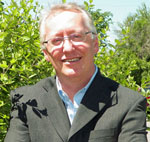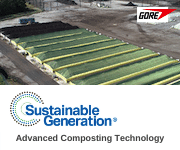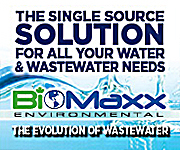 |
||||||||||||||||||||||||
| Subscribe | Past Issues | www.cwwa.ca | Water Source Magazine | ||||||||||||||||||||||||
|
CWWA News
I’ve been on the road a lot lately - Niagara (OWWA), Victoria (BCWWA), Niagara (CWS), San Antonio (very hot AWWA), London (WEAO) - and I get to do my regular “update on everything” speech. But in London, I presented for a full half hour with Barry Orr to tell a brief history of wipes and where we are today – a bit we titled “What’s Up With Wipes”. I was happy we attracted a good audience and we had a lot of fun. Barry and I have been working together on this project we were able to go back and forth easily. I‘d say we were somewhere between the Beastie Boys and Bob & Doug McKenzie. We turned our ‘lyrics’ into a magazine piece which you should soon see versions of in one of your regional association magazines or in the Environmental Science & Engineering magazine. We are excited to launch registration for the NWWC 2022 in Halifax. Registration includes
Federal Initiatives
On June 6, 2022, the government announced the formation of a new Nature Advisory Committee. The committee will address: advancing the development of Canada’s post-2020 biodiversity strategy, working toward area-based conservation targets, and supporting wildlife and species at risk management initiatives. On May 16, 2022, the Minister of Environment and Climate Change announced the launch of public consultations on the National Adaptation Strategy via a virtual symposium attended by over 1,000 participants. The Strategy is open for public consultation at https://letstalkadaptation.ca until July 15, 2022. Passed Second Reading in the Senate on April 7, 2022. The bill proposes amendments to CEPA to strengthen measures to require that risk assessments take into account the cumulative effects of toxic substances. Ultraviolet radiation-emitting (UV) and ozone-generating devices that make claims to control or kill bacteria and viruses on surfaces, objects, in water, and in the air have been widely promoted for sale in Canada during the pandemic. The object of this regulation is to protect the health and safety of Canadians by providing appropriate oversight of UV and ozone-generating devices through either registration or authorization of certain uses and ensuring that authorized UV pest control products do not make unsubstantiated claims regarding their efficacy. The Regulation specifically excludes water and wastewater treatment, but it's an interesting initiative for the sector. The government is gathering feedback over the next two years on 3 possible options identified in the Bow River Reservoir Options Phase 1: Conceptual Assessment – Main Report to help reduce the effects of flooding and drought along the Bow River by increasing water storage capacity. This engagement will have multiple phases and many ways to get involved over the next few years. More opportunities to provide input will be shared when available. Member News
Water Canada magazine and the Water’s Next Awards named Ian McIlwham as Canadian Operator of the Year at the awards ceremony in Niagara Falls, June 2nd. The U.S. Environmental Protection Agency has released health advisories for four per- and polyfluoroalkyl substances (PFAS). Two of the health advisories are interim, for perfluorooctanoic acid (PFOA) and perfluorooctanesulfonic acid (PFOS), and two are final, for hexafluoropropylene dimer acid (HFPO-DA or GenX) and perfluorobutanesulfonic acid (PFBS). Smart technologies are increasingly used across Canada to help manage and operate municipal stormwater systems. While these technologies can assist in building resilient and sustainable communities, without overall contextual planning, they can also introduce new risks and vulnerabilities. New CSA Group research explored current smart stormwater technologies (SST) and what is required to ensure safe communication between their components and reliable operation of the whole system. The research recommends developing standards for SST communication to support the efficient and safe use of smart technologies.
This publication provides an overview of the problem of affordability of wastewater utility bills and offers specific considerations that elected officials, utility managers, and utility staff might take into account when addressing affordability issues in their communities. This includes defining and measuring affordability, highlighting what features might be included in an assistance program for those unable to pay for basic service levels, identifying the primary targets for an assistance program and determining eligibility, listing possible performance measures for providing this assistance, and offering some case studies from communities that have been leaders in attempting to tackle these difficult issues.
Provincial News
The government is encouraging stakeholder feedback to help inform proposed regulatory amendments that address:
Questions and comments regarding this engagement can be emailed to: aep.waterpolicy@gov.ab.ca Ontario is putting processes in place to make it simpler for municipalities to report bypass and overflow instances so that system operators can focus more resources on preventing bypasses and overflows from occurring. On April 14, 2022, Environment and Climate Change announced that the Nova Scotia Federation of Municipalities has been selected to develop and administer the Sustainable Communities Challenge Fund. The fund will provide $15 million over three years. Setting up the fund is a goal in the Environmental Goals and Climate Change Reduction Act. Snippings & Clippings
Metro UK Wet wipes have been causing obstructions in drains across the country, and one company has now lost patience. Yorkshire Water reckons ‘millions’ is spent by staff clearing drain blockages each year. FCM Connect Communities across Canada are facing the threat of climate vulnerabilities and increasing costs in preparation or response to climate events. The negative impacts of climate change on communities extend beyond infrastructure failure and suspended municipal services to the decreased wellbeing of citizens and economic prosperity, there is hope as support for climate action grows. Water Canada Plastic pollution was already viewed as one of the most pressing environmental issues on the planet when, this spring, researchers made a pair of first-time and disturbing discoveries: tiny plastic particles were detected in both human blood and human lungs. Water Canad AECOM announced it has been selected by the City of Yellowknife to provide engineering services for a replacement submarine potable water supply line. This work aims to reduce the risk of flooding in the community and better protect the drinking water supply during times of extreme weather. AECOM authored Yellowknife’s Potable Water Source Selection Study in 2017, which evaluated the city’s potable water supply options as the current pipeline reaches the end of its useful life. Water Canada As pandemic restrictions have eased, many Canadians have begun enjoying gathering again with family, friends, and colleagues in a more carefree manner. While smoother waters abound, the reality is that there are many moving parts working hard beneath the surface to keep us safe. Public health is carefully monitoring the Coronavirus disease of 2019 (COVID-19), an infectious disease caused by the SARS-Coronavirus, and its variants. |
||||||||||||||||||||||||






